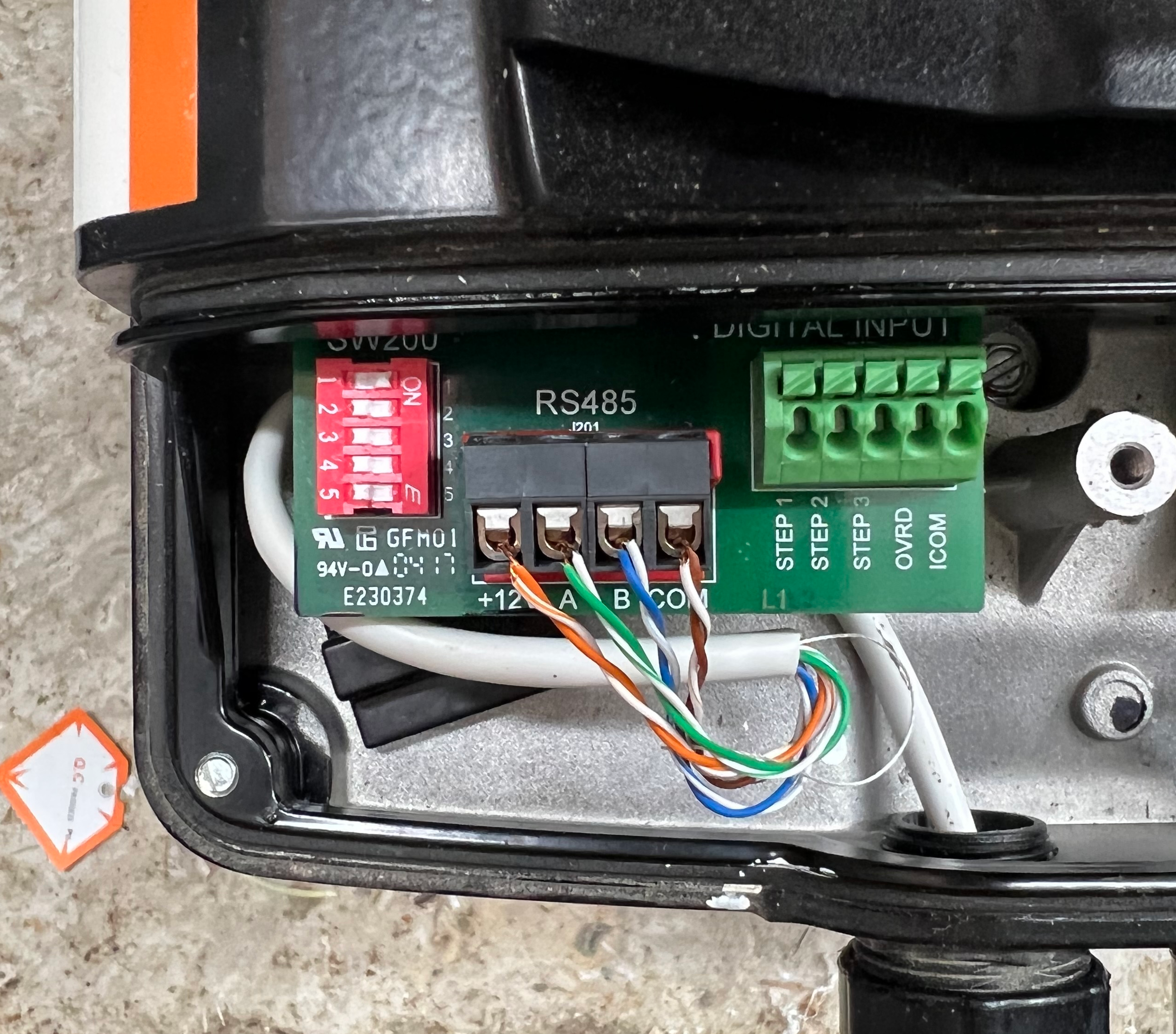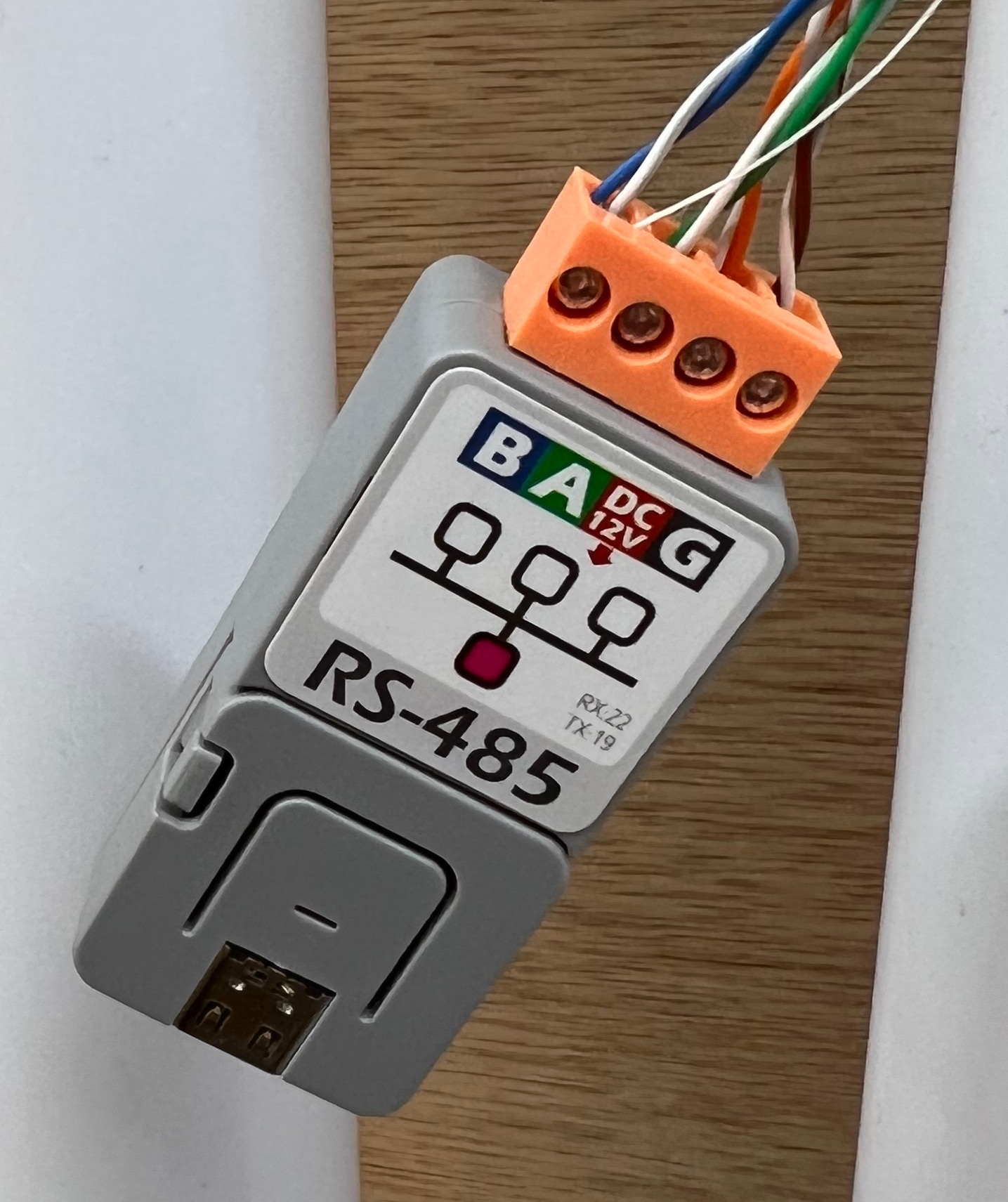ESPHome custom component to drive Century (and other) variable speed pump motors
Use this information at your own risk, if your pump isn't the same as mine then it may work, or it may not. YMMV. I don't think you'll break your pump because when I did something wrong during my development, the pump reported errors back to me, but it's possible that you might issue a valid, yet destructive command to your pump and that might be the end of it. I doubt it, but I can't be 100% sure, so ... you've been warned, tread carefully.
There are a slew of pool pumps that have a super variable speed motor driving them, and look like they can be controlled by a modbus controller as there is a connector marked RS485.
I have a Pentair Sta-Rite S5P2R-VS pool pump and looking closely at the pump labels, I found that this is powered by a Century VS motor which in turn was manufactured by Regal as a whitelabeled version of their VGreen variable speed motor.
After much hunting around I found this very informative post https://www.troublefreepool.com/threads/century-regal-vgreen-motor-automation.238733/
While that post is really about how to make the VGreen motor talk the Jandy protocol so that the pump can be controlled from an existing system, my interest was piqued because during that process, the pump is placed into a Modbus protocol mode which was something that I was very interested in.
You can identify these pumps as they have two automation compatible interfaces, the RS485 one and a 5-wire connector that allows remote control of the three preset speeds or the override speed.
There is also a 5-way DIP switch that controls how the pump firmware behaves, and this is key to driving the pump.
The critical switch is #1 which determines if the pump talks the Modbus commands as documented in Regal Modbus v4.17 protocol (in the ON position), or if it talks the OEM protocol (in the OFF position).
The RS485 interface also has a modest 12V power line which I was also very pleased about as I could use it to power the fantastic M5Stack ATOM ESP32 device without the need for any other external power source. Indeed, a good way to determine if you're selected on the Modbus protocol is that the 12V line is only live when DIP switch #1 is on and so this little device wont be powered otherwise.
For some reason, the pump doesn't talk basic Modbus (coils and registers) which would have worked just fine. Instead they have a custom protocol which uses functions sensibly in the custom function range. Without the protocol documentation that was outed on www.troublefreepool.com this wouldn't have been possible, so thanks to whoever found that.
I won't go into how to flash these devices, there are tons of resources available, you can start looking at https://esphome.io/
As of writing, ESPHome 2022.5.1 doesn't support being able to handle user-defined modbus functions, so you need to include the PR for the fix. This is done using this YAML in your configuration.
external_components:
- source:
type: git
url: https://github.com/gazoodle/esphome
ref: bug-fix-modbus-user-defined-function-handling
components: [modbus]Since this pump code is based off of data gleaned from an unsupported document, I won't be pushing this pump code to the ESPHome main branch, but you can get it from my GIT repo using this YAML.
external_components:
- source:
type: git
url: https://github.com/gazoodle/CenturyVSPump
ref: mainOnce flashed and added to Home Assistant, you will be able to turn the pump on or off and set the RPM speed.
external_components:
# Needed to implement latest modbus user-defined function handling
- source:
type: git
url: https://github.com/gazoodle/esphome
ref: bug-fix-modbus-user-defined-function-handling
components: [modbus]
# Location of CenturyVSPump component implementation
- source:
type: git
url: https://github.com/gazoodle/CenturyVSPump
ref: main
# You need a UART to talk to the RS485 bus
uart:
baud_rate: 9600
rx_pin: GPIO22
tx_pin: GPIO19
# You need the modbus component installed too
modbus:
# Include the CenturyVSPump external component in your firmware
centuryvspump:
switch:
# Turn pump motor ON or OFF
- platform: centuryvspump
name: Pool Pump Controller Run
sensor:
# Get current motor speed in RPM
- platform: centuryvspump
name: Pool Pump Controller RPM
type: rpm
unit_of_measurement: RPM
# Get current motor speed demand in RPM
- platform: centuryvspump
name: Pool Pump Controller Demand
address: 3
page: 0
scale: 4
type: custom
unit_of_measurement: RPM
# Control the pump speed demand RPM (range is from 600 to 3450 in steps of 50)
number:
- platform: centuryvspump
name: Pool Pump Controller Demand
id: id_number_rpm
# You can also have some buttons to force specific RPM speeds
button:
- platform: template
name: Pool Pump Controller Demand 600RPM
on_press:
then:
- number.set:
id: id_number_rpm
value: 600
- platform: template
name: Pool Pump Controller Demand 2600RPM
on_press:
then:
- number.set:
id: id_number_rpm
value: 2600
- platform: template
name: Pool Pump Controller Demand 3450RPM
on_press:
then:
- number.set:
id: id_number_rpm
value: 3450Shameless list of keywords to help other folk find this repo.
- Pentair SuperFlo VSP
- Jandy VS pump
- Hayward VS pump
- Century VS motor
- Regal VGreen motor
A list of sources that I discovered and thought might be of use when driving my pump.
- https://www.troublefreepool.com/threads/century-regal-vgreen-motor-automation.238733/
- https://community.home-assistant.io/t/intercept-echo-filter-modbus-communications-from-1-uart-hub-to-another-vs-pool-pump-solar-speed-override-project/340383
- Here-Be-Dragons/Pool-Controller#4
- https://www.pentairpooleurope.com/sites/default/files/documents/manuals/2137__SB-CU-IMP-040F_-_Notice_SPEED_FC_2019_04_09_EN_light.pdf
- https://hayward-pool-assets.com/assets/documents/pools/pdf/manuals/2014-TriStar-VS-TSG.pdf?fromCDN=true
- http://www.desert-home.com/2019/03/i-finally-gave-up-on-my-hayward.html
- tagyoureit/nodejs-poolController#393
- https://www.modbus.org/docs/Modbus_Application_Protocol_V1_1b.pdf

